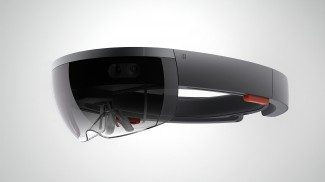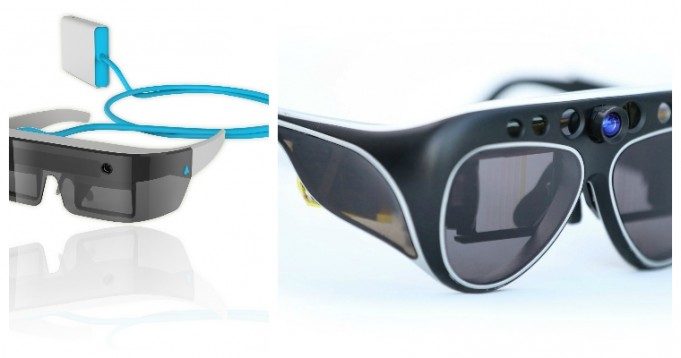HoloLens, a newly announced augmented reality device from Microsoft, is definitely turning some heads to the possibility of interacting with floating apps and games. We can’t help but notice though that there seems to be an eerie convergence of technology, leaving us with a serious case of déjà vu. Here we take a closer look at two crowdfunded devices that are working on the same problems as HoloLens: Atheer Labs’s AiR Smart Glasses and the Meta 1 developer kit.
See Also: ‘Microsoft HoloLens’ Revealed, an Untethered See-through AR Headset

Although Microsoft’s HoloLens is promising to bring some very important firsts to the field of augmented reality— like the integration of voice commands, or their Windows 10 ‘Universal apps’ that will run on both PC and the new AR wearable itself, we’re still scratching our heads over the fact that Microsoft is calling HoloLens “the first fully untethered holographic computer.”
Brushing aside the buzzwords, what Microsoft has introduced is an advanced AR wearable (holograms need not apply), but not entirely unlike some crowdfunded devices, namely Atheer Lab’s AiR Smart Glasses and Meta 1 Development Kit (formerly known as ‘Spaceglasses’).
AiR Smartglasses
Atheer Lab’s AiR Smartglasses essentially connects their AR glasses to an android-based computer, or as they say “the wallet”, that’s supposed to fit in your pocket while doing the computational heavy lifting. Although not ‘fully untethered’ by virtue of the cable connecting the two halves of the device, AiR Smartglasses integrates hand-tracking and gesture control with their see-through display that looks awfully similar to their undelivered developer kit directed towards consumers, a move by the company to consolidate funds and focus on growing their business.
However, since the new CEO stepped in, former HP mobility chief Alberto Torres, Atheer Labs has become much more enterprise-focused, and is only allowing demos with the Air Smartglasses by request through their website. No public pricing information or specs exist of their Smartglasses at this time, but with a rumored release date of late 2015, we’re bound to see more information come out detailing the specifics surrounding the device and exactly what its capable of.
Meta 1 Developer Kit, Meta Pro
Make no bones about it, Meta’s initial Kickstarter-funded developer kit is a resolutely tethered experience (unless you plan on shoving a laptop into a backpack), but full-featured low-power AR is a tricky beast to tame. Without access to cutting-edge mobile processors like Intel’s new Atom (code named ‘Cherry Trail’), reported by PCWorld to be driving HoloLens, the number of features packed into the Meta 1 dev kit necessitate the reliance on external power and a separate computing device.
The company’s new Meta Pro however, seen last September in a demo by YouTuber Austin Evans, is coming to a yet unspecified mobile device which will supposedly use a similar ‘in pocket’ cable scheme. Meta’s new refreshed device features 720p see-through displays for both eyes, computer vision depth mapping, 360 degree tracking, and of course the same gesture-based interface that the company is comparing to Ironman’s UI. We hope Meta can get this one down in price though, because at last year’s quoted price of $3,000 is looking a little (or in fact a lot) outside of the average consumer’s budget.
There’s a clear scarcity of detailed technical information on both devices, and probably for a pretty good reason. Much like Oculus’ interim feature prototype Crescent Bay, start-up companies aren’t exactly ready to release full specs on unfinished platforms. But now that the bar has been set by Microsoft, who knows what will stream out of Atheer Labs and Meta in the coming months. We’ll be keeping an eye on both to see what develops in the new market of consumer-grade AR, and report any changes in specifications as soon as they come out.







